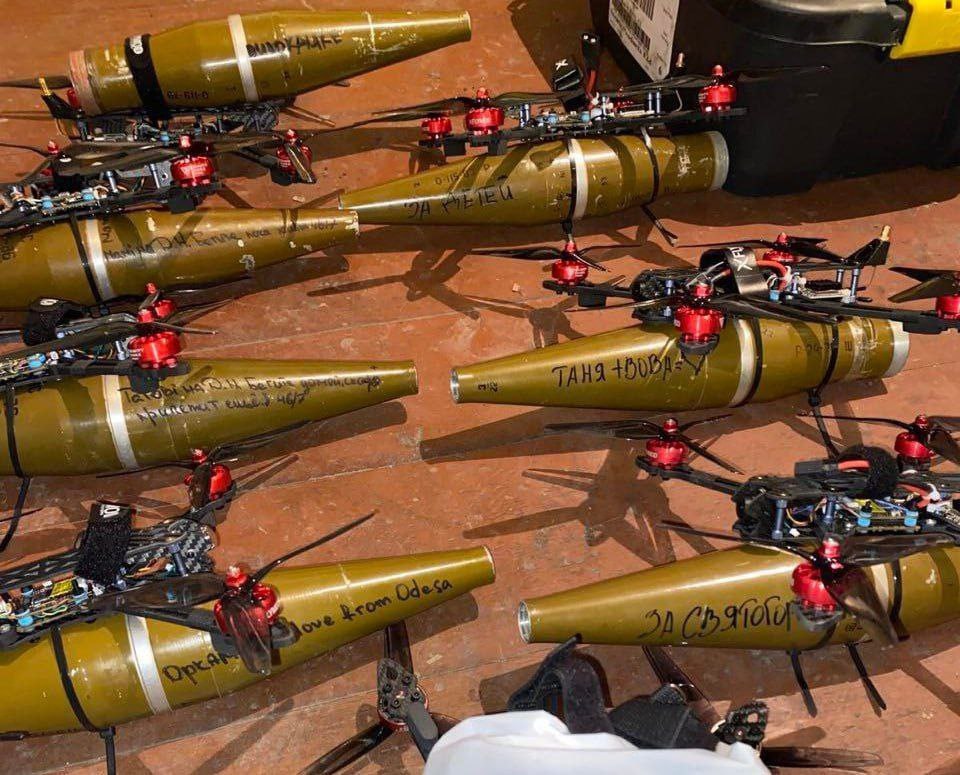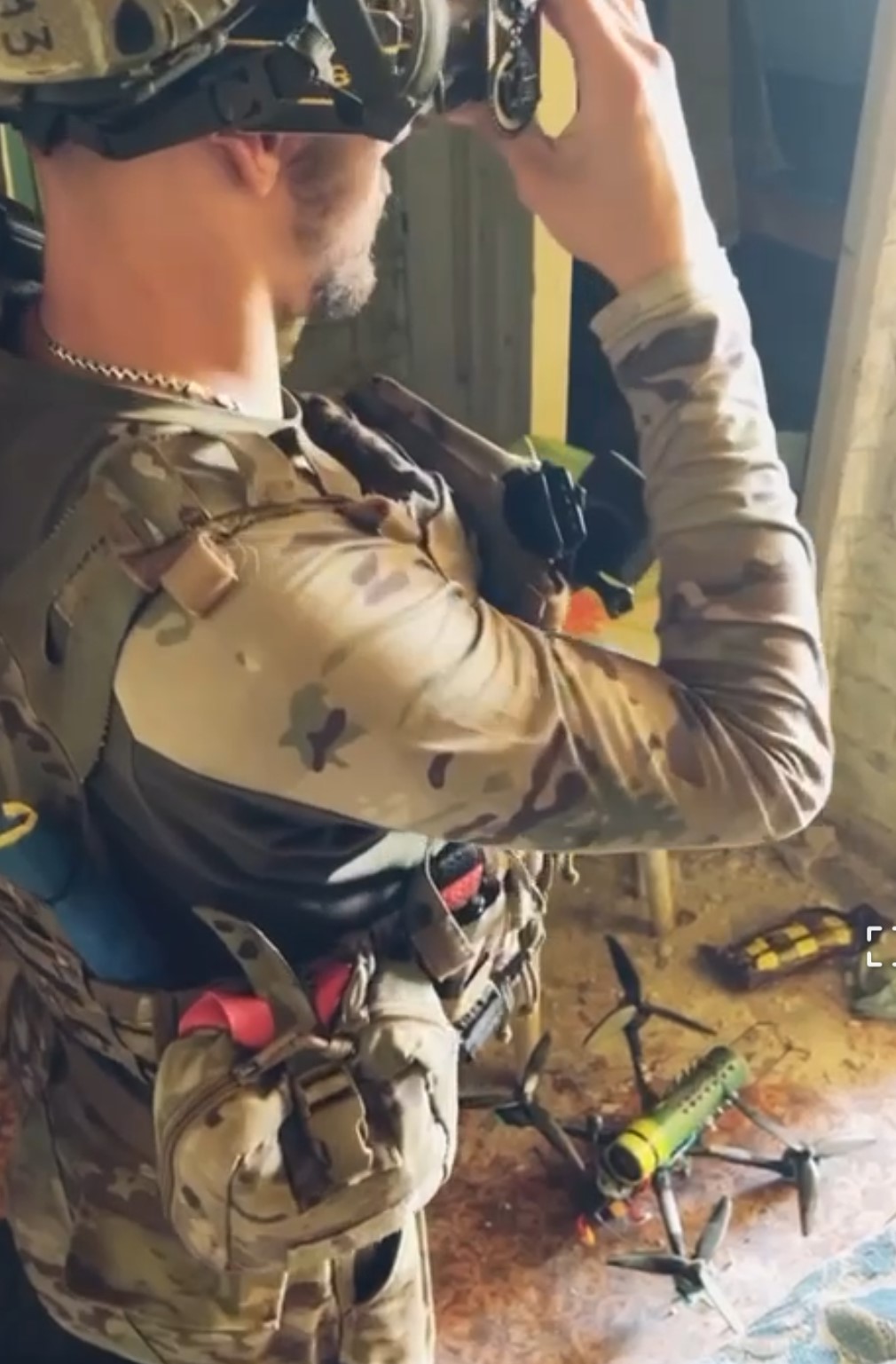Ukraine is arming commercially available quadcopter Unmanned Aerial Vehicles (UAV) with warheads from Rocket Propelled Grenades (RPG) to strike Russian ground targets, videos and pictures from a few Telegram groups showed.
Interestingly, it operates them using First-Person View (FPV) devices, which involves strapping a drone-controller screen onto the eyes.
The clips and recordings from the drones’ cameras show the quadcopters attacking moving BMP Infantry Fighting Vehicles (IFV) from various angles, with Russian soldiers seen escaping the vehicle before the drone hits one of them.
The strike locations are unclear, but Telegram groups claim the scene of the actions is either near Soledar or Bakhmut (Artemovsk). A few Russian groups also claimed them to be Russian drones, but this was established otherwise.
Another picture widely circulated shows six such quadcopters with PG-7VL rounds of the RPG-7 attached underneath them.
Ukraine had recently embarked upon a significant effort to manufacture and procure drones, setting up factories and drone manufacturing units. Available information suggests that these were mostly assembly units where the multiple UAV components are put together, with very little research and development activity.
The most significant announcement, however, was the creation of specialized “drone assault units” with Starlink terminals installed on each of them. Whether the drones in the latest videos are connected to the satellite internet service is unclear.
RPG Delivering Kamikaze Drones
One of the clips showed a quadcopter’s camera view, showing the UAV descending fast downward on a moving BMP from the rear. The door carrying the soldiers is open, and some Russian troops are riding on top.
They are then seen frantically moving and firing at the UAV as it is just a few meters away, indicating it has been spotted. The footage suggests the hit occurred precisely behind the turret.
In the other video, the quadcopter hits a BMP from the front, with the tip of an object crudely tied with a band visible – possibly an explosive.
In the third video, the cone of the RPG warhead is visible as it hits the BMP from the side. While the fate of the armored vehicles after the strike is not known, comments on Russian Telegram groups acknowledge the battlefield hack being a significant irritant.

A final video shows three Russian armor targets involving T-64 or T-72 tanks. The quadcopters maneuver themselves above the targets to align with the vulnerable locations over and in front of the turret.
In the collage, the crew from one of the tanks, billowing smoke, is seen escaping, while another tank right behind it, parked back to back, is unharmed. The quadcopter then drives itself into the tank that is already hit, and it explodes violently.
Two other separate tank targets are also hit on the top of the turret, igniting extremely bright flames, which means the UAVs must have hit the ammunition magazine.
The tanks in the first and the last videos are destroyed and mangled. One of the strikes is also shown being recorded by an overhead UAV.

Significantly Effective Hack
The tying of the Rocket Propelled Grenade-7 (RPG-7) rounds is what makes it unique since the launcher is specifically meant for taking out hardened ground targets. \
The PG-7VL round, roughly identified from the photo, has been described as a 2.6-kilogram single-stage High Explosive Anti-Tank (HEAT).
The innovation is fast becoming a substitute for the American Javelin, also used in a top-attack mode. The profile it is being used is also similar to the Russian Lancet-3 kamikaze drone, albeit with a limited range of just five kilometers, as claimed on Ukrainian Telegram groups.
“Already more than a dozen units of our equipment and a dozen soldiers were struck by this method,” said the administrator of one private group affiliated with the Russian ground forces.
- The author can be reached at satamp@gmail.com
- Follow EurAsian Times on Google News




